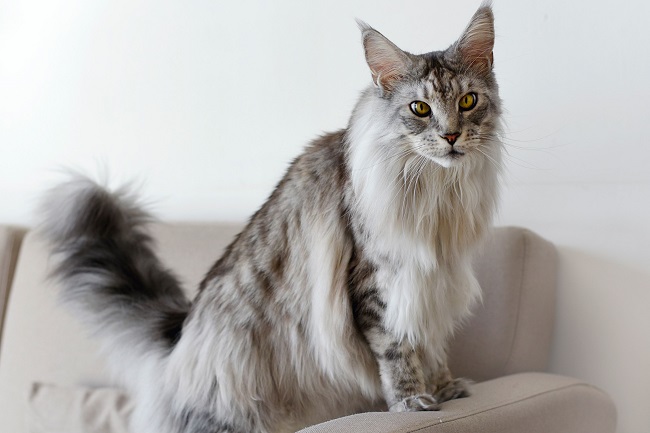In the vast world of domestic felines, we encounter breeds that range from dainty, delicate creatures to impressive, larger-than-life counterparts. This article focuses on the latter, providing a fascinating tour of the ten largest domestic cat breeds.
These feline giants, with their commanding presence and hefty physique, offer an extraordinary pet-owning experience for cat lovers who believe bigger is indeed better.

Top 10 Largest Cat Breed
Here is a list of top 12 cat breed:
Read Also:
Maine Coon
Known as the “gentle giants” of the cat world, Maine Coons can grow up to 40 inches in length. Their muscular bodies, large bone structure, and long, bushy tails make them one of the most robust domestic cat breeds.
Savannah Cat
The Savannah Cat, a crossbreed between a domestic cat and a serval, is recognized for its tall, slim build and striking spotted coat. These cats can reach heights of up to 19 inches.
Norwegian Forest Cat
Originally bred to withstand Norway’s cold climate, the Norwegian Forest Cat is a sturdy breed with a strong body, bushy tail, and dense double coat. It can grow to lengths of 18 inches or more.
Ragdoll
Known for their affectionate nature and striking blue eyes, Ragdolls can reach a weight of up to 20 pounds. Their large size is complemented by a soft, semi-longhair coat and a muscular build.
Siberian
Siberians, hailing from Russia’s taiga region, are robust cats with a dense triple coat. These cats can weigh up to 20 pounds and have a hearty constitution, reflecting their survival traits in harsh climates.
British Shorthair
Famous for their dense, plush coat and round, teddy-bear looks, British Shorthairs are among the heaviest cat breeds, with males often weighing up to 20 pounds.
Bengal
The Bengal, a hybrid of an Asian Leopard Cat and a domestic cat, is an active and muscular breed. Bengals can reach up to 18 inches in length, distinguished by their wild, leopard-like markings.
Ragamuffin
Ragamuffins, closely related to the Ragdoll breed, are large cats known for their plush, rabbit-like fur. They can weigh up to 20 pounds, characterized by a broad chest and sturdy body.
Chausie
The Chausie is a hybrid breed developed from jungle cats, known for their tall, lean bodies and agile nature. These cats can grow up to 18 inches tall, sporting a short, dense coat and an athletic appearance.
Turkish Van
The Turkish Van, celebrated for its unique, semi-long hair and color pattern, is a robust and large-bodied breed. These cats are muscular and solid, often weighing up to 20 pounds.
Read Also:
Conclusion
The world of large domestic cat breeds is as diverse as it is enchanting, boasting a range of felines that are imposing in size yet gentle in nature.
From the majestic Maine Coon to the exotic Savannah, the plush British Shorthair to the sturdy Siberian, these breeds display a distinctive blend of size, strength, and endearing traits.
In closing, it’s essential to note that while the physical stature of these breeds can be awe-inspiring, each of these cats requires appropriate care, love, and attention to thrive.
Embracing these gentle giants into your home brings a new scale of feline companionship, where love comes in a bigger, furrier, and heartier package.
























